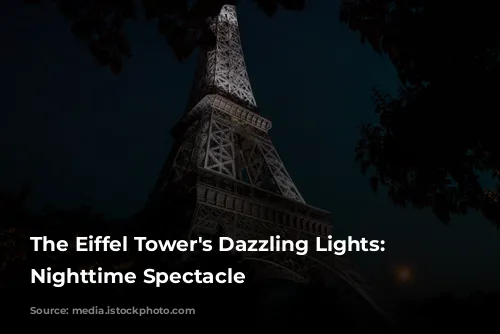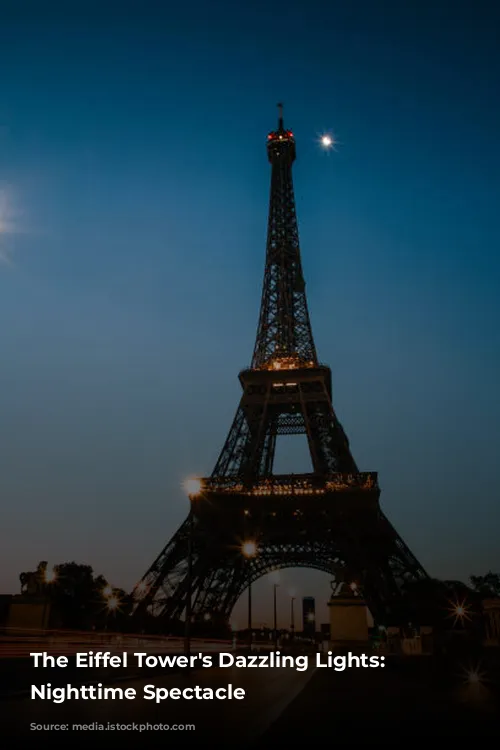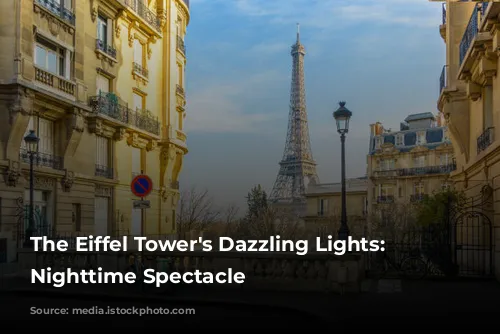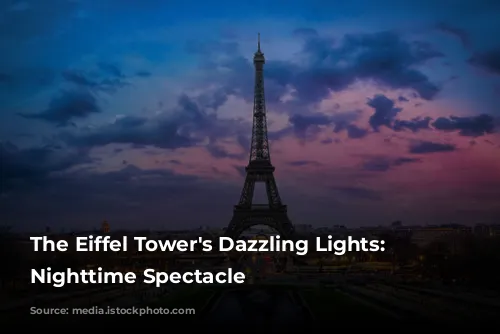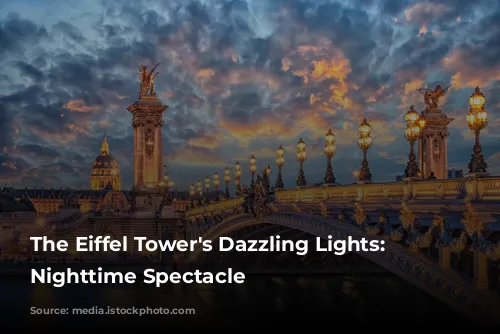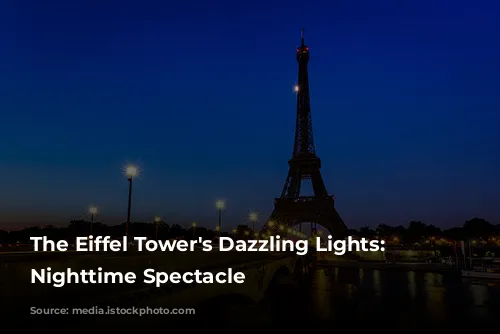Paris wouldn’t be the same without the Eiffel Tower’s shimmering lights illuminating the night sky. But when can you catch this magical display?
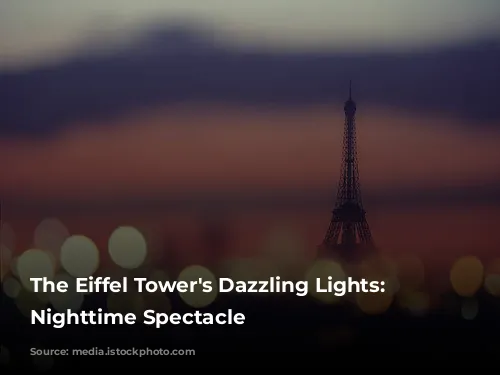
When do the lights turn on?
The Eiffel Tower’s nighttime lights are a dazzling spectacle that begins as darkness falls. The tower’s golden lighting system, powered by 336 spotlights, turns on at nightfall, utilizing sensors to detect the changing light conditions.
The iconic golden lighting isn’t the only highlight. Five minutes into each hour, the sparkling lights come alive, creating a mesmerizing show. At the same time, the beacon, two powerful beams of light, rotates across the Parisian skyline.
For example, if the sun sets at 8:35 pm, the lights will turn on within the following 10 minutes. The first sparkling display will begin at 9:00 pm.
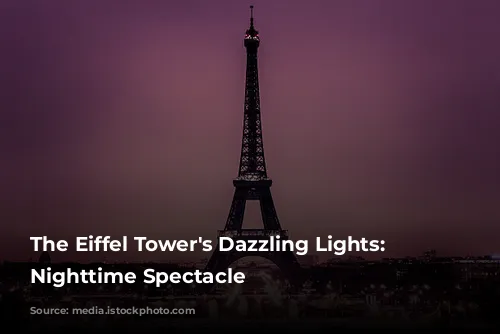
When do the lights turn off?
The Eiffel Tower’s lights typically turn off at 11:45 pm, signaling the end of a dazzling evening. The last sparkle show takes place at 11:00 pm. However, during the summer months and French holidays, the Tower stays open later, closing at 12:45 am. The sparkles continue until 1:00 am, and even though the golden lights and beacon switch off at 1 am, the tower remains adorned with shimmering lights for a few minutes. Don’t miss this extraordinary finale!
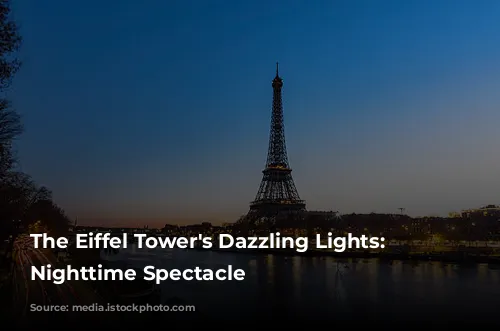
The Best Views of the Eiffel Tower’s Lights
For a truly magical experience, visit the Eiffel Tower at night. Stand on the stairs and let the golden lights wash over you. To get the best view of the sparkles, head to the second floor and look up, marveling at the glittering spire.
Even if you aren’t visiting the Tower, you can still witness its magnificent display from various spots around Paris. The Trocadéro esplanade and Champ de Mars are renowned for offering unbeatable views of the lights turning on.
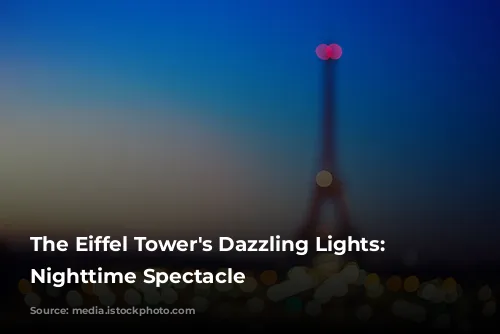
How does the Eiffel Tower’s Golden Lighting Work?
The Eiffel Tower’s golden lighting system was designed by Pierre Bideau and inaugurated on December 31, 1985. This modern system uses 336 spotlights, equipped with yellow-orange high-pressure sodium bulbs.
This innovative lighting system, met with international acclaim, helped launch a new wave of nighttime monument illuminations across Paris, France, and the world.
The spotlights, positioned within the Tower’s structure, project beams of light upward, bathing the intricate metal framework in a warm glow. They replaced the 1,290 external spotlights used previously, highlighting the Tower’s delicate structure for nighttime visitors. The lighting system is not only a beautiful aesthetic feature but also plays a crucial role in the tower’s safety.
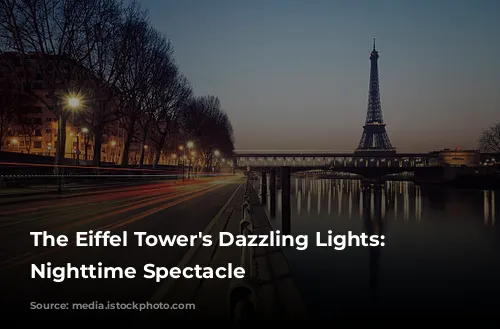
How do the Eiffel Tower’s Beacon and Sparkles Work?
On December 31, 1999, the Eiffel Tower introduced the beacon and sparkles, captivating the world with their dazzling brilliance.
The beacon, comprised of four motorized marine-style floodlights, features two beams of light capable of reaching 50 miles. These beams are controlled by a computer, using software and a programmable robotic system, which orchestrate their movements. The beacon completes a 90° rotation, forming a cross-shaped double beam that pivots 360°.
The beacon uses 6000W xenon bulbs, chosen for their exceptional lifespan of approximately 1,200 hours. The lighting heads are over-ventilated to prevent overheating, and a heating system activates when temperatures drop below 32°F. The beacon, a symbolic and universal guide, pays homage to Gustav Eiffel’s original beacon.
The sparkles, also created by Pierre Bideau, feature 20,000 low-power 6W bulbs strategically placed on all four sides of the tower. They randomly flicker in short bursts, creating a captivating sparkling effect. The sparkles illuminate for precisely five minutes at the start of every hour, beginning at nightfall and continuing until the tower closes.

